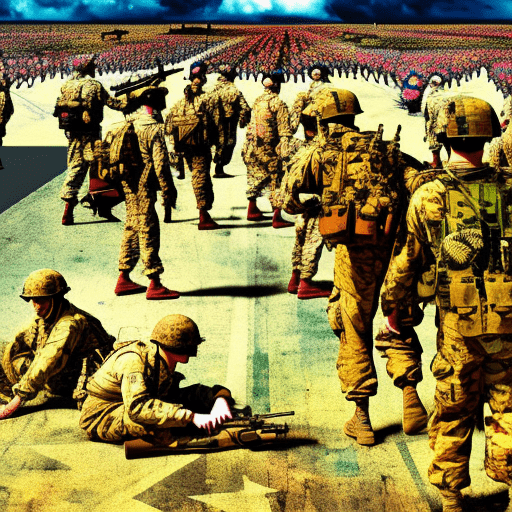One-line summary:
Catch-22 is a satirical novel that follows the absurd and chaotic experiences of a U.S. Army Air Forces B-25 bombardier during World War II.
Joseph Heller’s Catch-22 is a darkly humorous and satirical novel that takes place during World War II. The story follows the experiences of Captain John Yossarian, a U.S. Army Air Forces B-25 bombardier stationed on the island of Pianosa, off the coast of Italy. Yossarian and his fellow airmen are trapped in a bureaucratic nightmare, where their lives are constantly at risk and their sanity is pushed to the edge.
The Absurdity of War:
At the heart of Catch-22 is the exploration of the absurdity and futility of war. Heller uses dark humor and satire to depict the madness and chaos that ensue when individuals are caught in the machinery of war. The novel challenges the traditional heroic narrative of war and exposes the hypocrisy and illogicality of the military bureaucracy.
Yossarian, the protagonist, is desperate to escape the war and the constant threat to his life. However, he is trapped by the eponymous “Catch-22,” a paradoxical bureaucratic rule that states that a soldier can only be declared insane if they willingly continue to fly dangerous missions. This Catch-22 effectively prevents Yossarian and his comrades from ever being able to escape the war, as their desire to avoid danger is seen as a sign of sanity.
Throughout the novel, Heller presents a series of absurd situations and characters that highlight the senselessness of war. From the incompetent and power-hungry officers to the arbitrary rules and regulations, the military bureaucracy is portrayed as a machine that grinds up the lives of its soldiers without any regard for their well-being.
The Loss of Identity and Sanity:
Another major theme in Catch-22 is the loss of identity and sanity in the face of war. Yossarian and his fellow airmen are constantly subjected to traumatic experiences and the constant threat of death, which takes a toll on their mental health. As the war progresses, the line between reality and delusion becomes blurred, and the characters struggle to maintain their sanity.
Yossarian’s desperate attempts to avoid flying missions and his growing paranoia reflect the psychological toll that war takes on individuals. The novel also explores the dehumanizing effects of war, as the characters become reduced to mere numbers and statistics in the eyes of their superiors.
The Power of Satire:
Catch-22 is renowned for its use of satire to critique war and bureaucracy. Heller employs a dark and absurdist sense of humor to expose the flaws and contradictions of the military system. Through his satirical lens, he highlights the absurdity of war and the dehumanizing effects of bureaucracy.
The novel’s biting satire challenges the reader to question the logic and morality of war. Heller’s use of humor serves as a powerful tool to confront the horrors of war and the systems that perpetuate it.
Key takeaways:
- The absurdity and futility of war are central themes in Catch-22.
- The loss of identity and sanity in the face of war is explored through the experiences of the characters.
- Satire is used as a powerful tool to critique war and bureaucracy.
“There was only one catch and that was Catch-22, which specified that a concern for one’s own safety in the face of dangers that were real and immediate was the process of a rational mind.” – Joseph Heller, Catch-22
Catch-22 is a thought-provoking and darkly humorous novel that challenges conventional notions of war and bureaucracy. Through its satirical lens, it exposes the absurdity and futility of war, while also exploring the psychological toll it takes on individuals. Heller’s masterpiece continues to resonate with readers, reminding us of the importance of questioning authority and the consequences of blind obedience.












